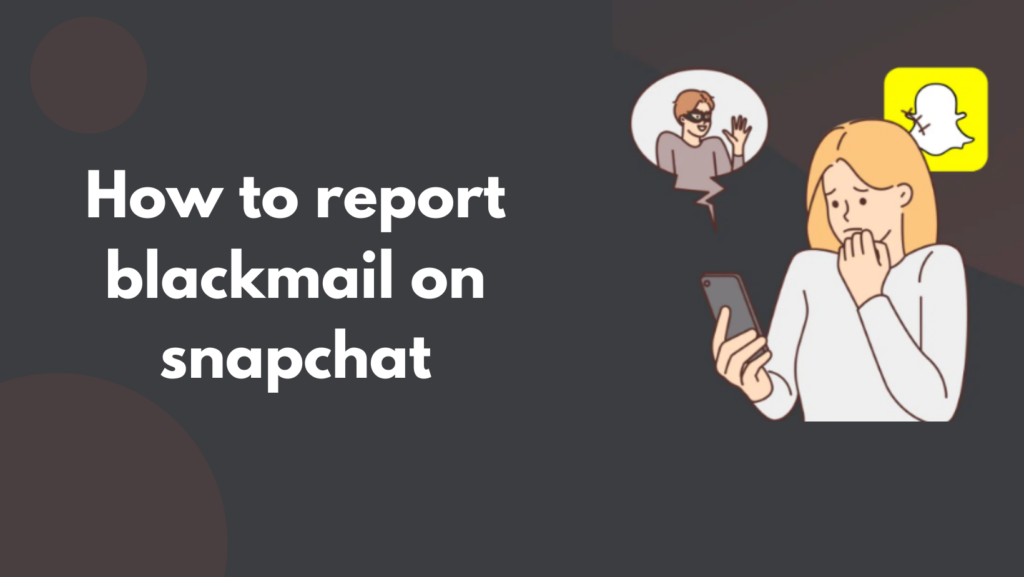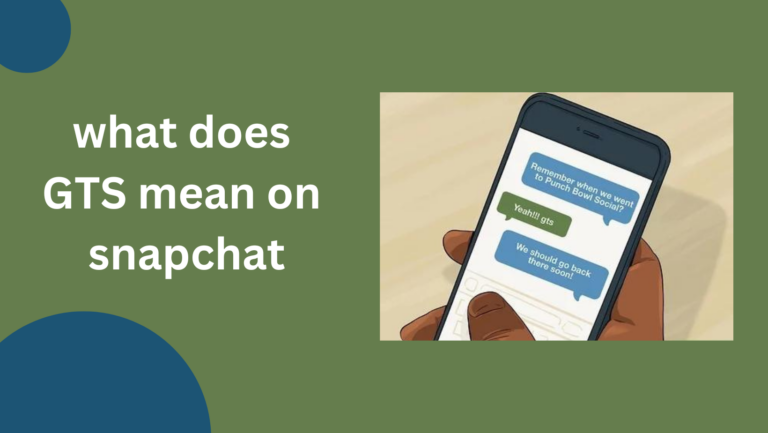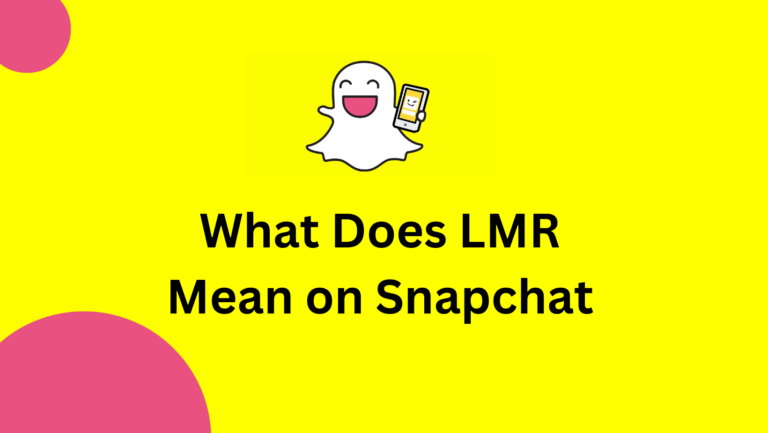How to Report Blackmail on Snapchat

Imagine this you’re scrolling through your Snapchat, chatting with friends, when suddenly, you receive a threatening message. The sender claims to have compromising photos of you, demanding money or something else in exchange for their silence. This is blackmail, and it’s an all-too-common scenario in today’s digital world. As platforms like Snapchat become more integral to our daily lives, they also become fertile ground for cybercriminals looking to exploit users.
Blackmail on Snapchat is a serious issue that can leave victims feeling scared, helpless, and unsure of what to do next. Whether it’s threats to share personal photos, videos, or sensitive information, understanding how to report blackmail on Snapchat is crucial. In this guide, we’ll walk you through the steps you need to take to protect yourself and get the help you need.
Understanding Blackmail on Snapchat
What is Blackmail on Snapchat?
Blackmail is the act of threatening to reveal personal or damaging information about someone unless they meet specific demands, often involving money or favors. On Snapchat, this can take various forms, including threats to expose private messages, images, or videos. The anonymity and ephemeral nature of Snapchat make it a target for cybercriminals who use these features to intimidate and extort users.
On Snapchat, blackmailers might pretend to be a friend or an acquaintance, luring users into sharing private content before revealing their true intentions. Others may hack into accounts, steal content, and use it as leverage. The blackmailer might demand money, more explicit content, or other forms of payment in exchange for not sharing the compromised material.
How Common is Blackmail on Snapchat?
Blackmail on social media is on the rise, and Snapchat is no exception. With millions of daily active users, Snapchat has become a popular platform not just for social interactions but also for cybercriminals looking to exploit its features. According to recent studies, a significant percentage of online extortion cases involve social media platforms, with Snapchat frequently mentioned due to its large user base and the perceived anonymity it offers.
The rise in such incidents can be attributed to several factors: the growing number of Snapchat users, the ease with which content can be shared and saved, and the increasing sophistication of cybercriminals. It’s important to note that anyone can be a target, regardless of age, gender, or social status.
Recognizing Signs of Blackmail on Snapchat
Red Flags to Watch Out For
Recognizing the signs of blackmail early can help you take swift action. Here are some red flags to be aware of:
- Unusual Requests: If someone you barely know or have just started chatting with on Snapchat asks you to share personal or explicit content, be cautious. This could be a setup for future blackmail.
- Threatening Messages: Messages that contain threats to expose personal information or images unless demands are met are clear signs of blackmail.
- Pressure to Keep Quiet: Blackmailers often pressure their victims into silence by threatening further harm if they report the incident or tell anyone.
- Sudden Account Takeovers: If you notice unauthorized access to your account, such as messages sent or content shared that you didn’t authorize, it could be a sign that someone is trying to blackmail you.
Examples of Blackmail Scenarios
To better understand what blackmail on Snapchat looks like, let’s consider a few hypothetical scenarios:
- Scenario 1: The Friend Turned Foe: You start chatting with someone who seems friendly and trustworthy. After a few conversations, they convince you to share a personal photo. Soon after, they reveal their true intentions, threatening to send the photo to your entire friends list unless you meet their demands.
- Scenario 2: The Account Hacker: A hacker gains access to your Snapchat account, downloading all your saved content. They then contact you from another account, demanding money in exchange for not posting the content publicly.
- Scenario 3: The Fake Contest: You receive a message claiming you’ve won a contest, but to claim your prize, you need to send a photo ID or other personal information. Once provided, the scammer uses this information to blackmail you.
Immediate Actions to Take if You’re Being Blackmailed
Stay Calm and Don’t Respond
The first and most important step if you’re being blackmailed is to stay calm. Panic can lead to rash decisions, which might worsen the situation. Do not engage with the blackmailer or comply with their demands. Responding could encourage them to continue their threats, and there’s no guarantee that they will keep their word even if you meet their demands.
Document Everything
Gathering evidence is crucial. Start by taking screenshots of all the blackmail messages, including any demands, threats, or proof they claim to have. Make sure to capture the sender’s username, the date, and time of the messages. If the blackmailer sends images or videos, save copies of those as well. This documentation will be vital when reporting the incident to Snapchat or law enforcement.
Secure Your Account
If you suspect your account has been compromised, take immediate steps to secure it. Change your password to something strong and unique. Enable two-factor authentication (2FA) for an extra layer of security. Review your account activity to ensure there are no unauthorized logins. If possible, log out of all devices and log back in using the new password.
How to Report Blackmail on Snapchat
Using Snapchat’s In-App Reporting System
Snapchat has built-in tools for reporting abusive behavior, including blackmail. Here’s how to use them:
- Open the Chat: Go to the chat with the user you want to report.
- Tap on Their Bitmoji or Name: This opens their profile.
- Tap on the Three Dots: In the top-right corner, select “Report” from the dropdown menu.
- Select the Reason: Choose the option that best describes the issue, such as “Threats or blackmail.”
- Submit Your Report: Follow the prompts to complete your report.
Snapchat reviews reports and may take action against the offending account, such as suspending or banning it. However, response times can vary, and it’s important to continue securing your account and gathering evidence while waiting for a resolution.
Contacting Snapchat Support Directly
In more severe cases, or if you don’t receive a timely response from Snapchat’s in-app reporting system, you can contact Snapchat Support directly. To do this:
- Visit the Snapchat Support website.
- Navigate to the “Report a Safety Concern” section.
- Fill out the form with as much detail as possible, including screenshots and any evidence you’ve collected.
- Submit the form and wait for a response.
Provide as much information as possible when contacting support. Include details about the blackmailer, the threats made, and any steps you’ve already taken to secure your account. Snapchat may request additional information or evidence as they investigate the incident.
Involving Law Enforcement
If the blackmail involves serious threats, extortion, or illegal content, it’s essential to involve law enforcement. Local police departments often have cybercrime units that can assist in these cases. When reporting to law enforcement:
- Provide all Documentation: Share the screenshots, messages, and any other evidence you’ve gathered.
- Explain the Situation Clearly: Be clear about what has happened, including how the blackmailer contacted you and what they’re demanding.
- Follow Their Advice: Law enforcement may instruct you on the next steps, which could include preserving further evidence or avoiding communication with the blackmailer.
Law enforcement agencies have the tools and authority to investigate and potentially prosecute the blackmailer, especially if the threats involve significant harm or illegal activities.
Protecting Yourself from Future Blackmail Attempts
Educating Yourself and Others
Awareness is the best defense against blackmail. Educate yourself and those around you about the risks of sharing personal content online. Understand that once something is shared online, it can be saved and redistributed without your consent. Consider attending workshops or webinars on online safety, and regularly discuss these topics with friends and family.
Using Privacy Settings Effectively
Snapchat offers various privacy settings that can help protect your account from blackmailers:
- Who Can Contact Me: Set this option to “Friends” to ensure only people you know can send you messages.
- Who Can View My Story: Limit this to “Friends” or create a custom list of trusted individuals.
- Who Can See My Location: Use “Ghost Mode” to keep your location private, preventing potential stalkers from tracking you.
- Clear Conversations: Regularly clear your chat history to remove any sensitive information from your account.
Adjusting these settings reduces the risk of strangers or potential blackmailers contacting you through Snapchat.
Being Cautious of Online Interactions
Exercise caution when interacting with others online, even if they seem friendly. Avoid sharing personal information, photos, or videos with people you don’t fully trust. If something feels off, trust your instincts and disengage from the conversation. Remember, once you share something online, you lose control over how it’s used or distributed.
Conclusion
Blackmail on Snapchat is a serious issue that can have lasting impacts on your mental and emotional well-being. However, by staying vigilant, documenting everything, and knowing how to report these threats, you can protect yourself and potentially stop the blackmailer in their tracks.
Remember, you’re not alone, and help is available. Reporting blackmail is the right course of action, and by doing so, you’re taking the first step toward regaining control




